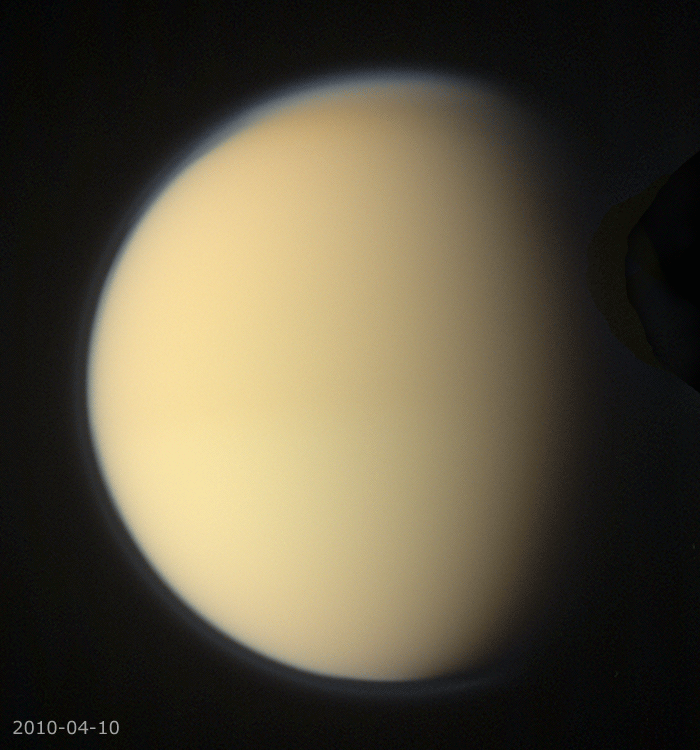Emily Lakdawalla • Nov 06, 2012
Watching the slow shift of seasons on Titan
Gordan Ugarkovic was playing in the Cassini data archives when he noticed something interesting: two sets of data comprising two approximately-true-color images of Saturn's moon Titan that were taken from almost exactly the same perspective, but on different dates. For most places in the solar system, the change of date wouldn't matter very much. It might shift the positions of some shadows slightly, but that's it. Titan's different. Like Earth and Mars and the giant planets (and also a few of the Kuiper belt objects, thought we haven't seen them up close yet), Titan has an atmosphere that changes substantially with the seasons.
The two pictures in this animation were taken 20 months apart. The earlier one, from April 2010, still shows a hazy "hood" over Titan's north pole, which was then just exiting winter. In the later one, that hood is much less obvious, and there's a hint of one forming in the south. Also, there's now haze spread evenly all over the planet, which you can see as a bright line (or sometimes several lines) floating a couple hundred kilometers above Titan's limb. Titan is kind of like one of those "ooze tube" or liquid motion desk toys, where you turn it upside down and convective instabilities form and two different colored fluids slowly trade places. Titan hasn't been turned upside down, but the Sun moving from south to north has effectively accomplished something similar, and now Titan's atmosphere is turning upside down to follow the shift. This is one reason Cassini's doubly-extended mission is worth NASA's continued support: to watch the long-term shifts that the changes in seasons bring to Titan and Saturn's atmospheres.

A side note: when I asked for the images to post, Gordan warned me that if you increase the contrast on the 2010 one you'll see evidence of him erasing another moon (Dione) from the view. I suddenly realized that the issue of erasing evidence of Dione had reared its head on this website before, with exactly the same image sequence. Funny! (My version was made with much lower-quality raw JPEG images rather than the archival PDS data that Gordan used.)
Let’s Go Beyond The Horizon
Every success in space exploration is the result of the community of space enthusiasts, like you, who believe it is important. You can help usher in the next great era of space exploration with your gift today.
Donate Today

 Explore Worlds
Explore Worlds Find Life
Find Life Defend Earth
Defend Earth

